Studying the conceptual aspects in Satyanarayana Gavara’s oeuvre
Written by Juhi Mathur
Born and brought up in a family of tenant farmers in Andhra Pradesh, Satyanarayana Gavara’s art practice has been governed by his experiences in his home and the farmer society at large. The vocabulary is connotative, and speaks about Satyanarayana’s experience with food and family, while focusing on the traditional practices that are embedded in the daily lives of farmers, hence making his work anthropological as he delves into the various societal themes of caste structures and hierarchies. Transforming food into a motif in his woodcuts, he looks at the sublimation of food and its role in a community. French anthropologist and philosopher Claude Levi Strauss and French philosopher Roland Barthes have focused on the position of food in culture – art history and literature; defining it as a form of communication with its own set of rules and grammar. Food carries various meanings within itself, as seen in the role of various indigenous practices which are a result of a particular community and the environmental factors. Satyanarayana’s practice also focuses on this complex role of food in shaping human rituals and traditions.
.
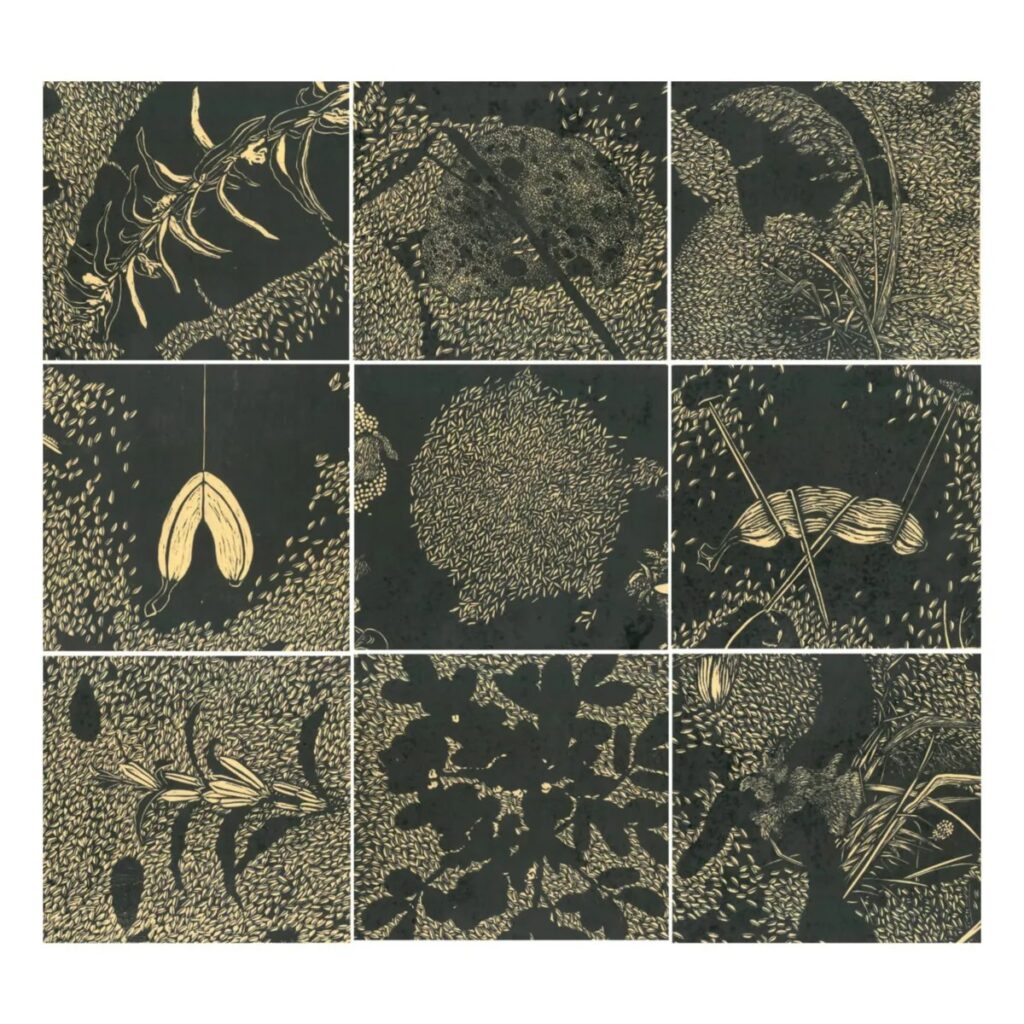
.
Satyanarayana’s practice is embedded in printmaking as he did his bachelors and masters in the subject, while his bachelor’s in Visakhapatnam focused on the technicality of the medium, teaching him the versatility of print, his master’s from Faculty of Fine Arts in MSU (Maharaja SayajiRao Gaekwad University) Baroda helped him gain more insight into the process of visual vocabulary. He was encouraged to hone his concepts and individual thoughts which would become part of his visual narrative. This prompted Satyanarayana to delve deeper into his life and identity to define his expression. He mentioned that during his bachelor’s there was a point of brief doubt and anxiety and returned to the farmlands to his family, and it was during this period that his father asked him to accompany him to the fields and help him with the labour. Experiencing the hardships firsthand, he decided to go back to school, however this experience stayed with and these anecdotes from home seeped into his creations gradually. The relationship with the farmers and food became even more nuanced during the second year of his master’s when the economic struggles overrode everything else, it was during this stage that he saw an intricate relationship between hunger and economic status. A more nuanced layer engulfed these relationships between class and food with the arrival of covid -19 in 2020 when Satyanarayana was confined to his house during lockdown, he returned to his village, he came face to face with the ideas of hunger and traditions around food. The shortage of food made him realise the value of a meal, the complexities in the politics which affects farmers and their livelihood, compelling him to go back to his roots to understand and present the struggles of his family and various other farmers from the community.
.
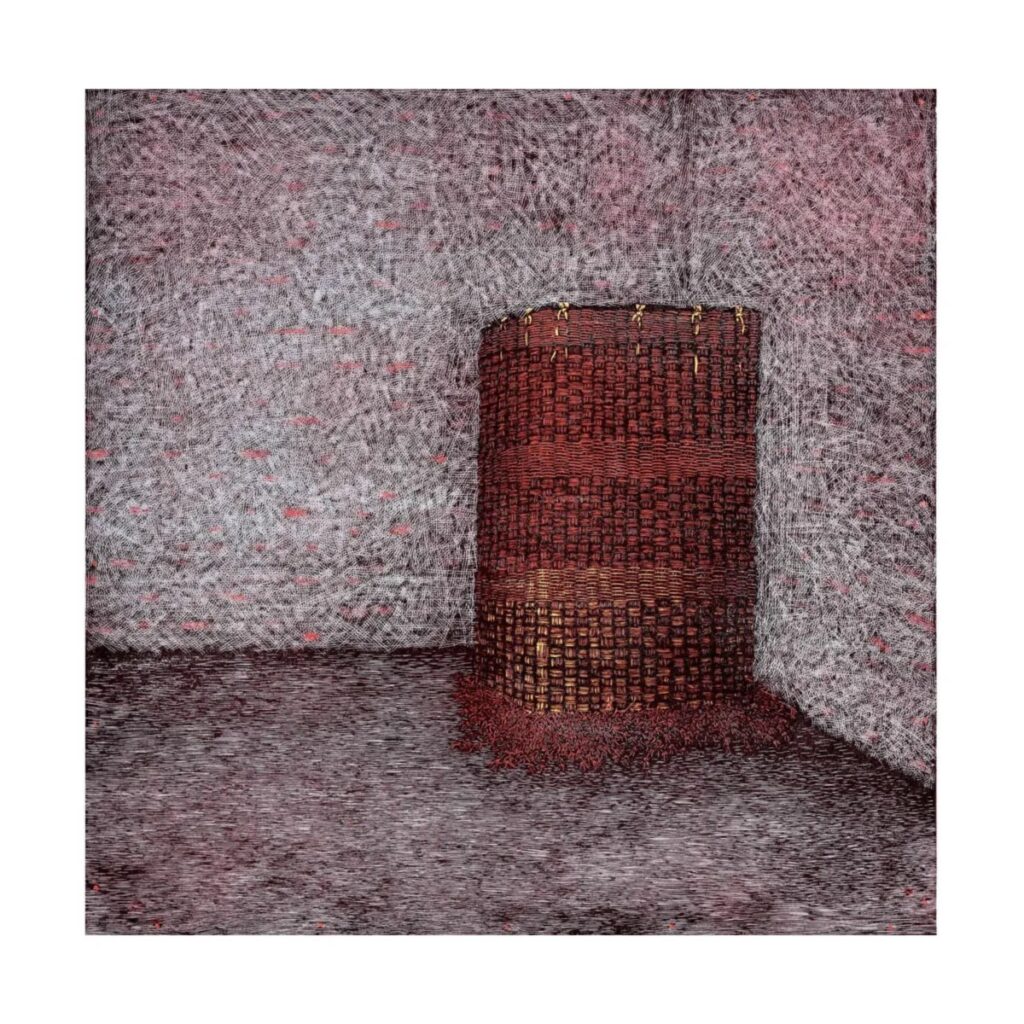
.
His oeuvre specifically focuses on the personal problems as well as the social problems in the farmer community, looking at the deeply systemic issues that plague their development and autonomy. Through the motifs used in the artworks, Satyanarayana depicts various societal and political impediments, like the landlord system which exploits farmers and affects their profit which affects future generations of the family as well. In the diptych, “Intelligence of Innocence” , Satyanarayana has presented two halves on each side showcasing the unequal distribution of the crops by the landlord which severely affects the farmers. Henceforth, delineating the corrupt practices as well as focusing on the class issues and the increasing gap between the proletariat and the bourgeoisie in Marxist terms. He touched upon the economic issues in a country like India, which is an agrarian society with almost 74% of its population belonging to the rural region. Furthermore, he also focuses on the role of food in community-building practices, which is also seen in the “Intelligence of Innocence” , pertaining to the harvest practices where the farmers make a mixture of burnt rice straws and sprinkle it on the mound of harvested crop to prevent it from getting stolen at night.
.
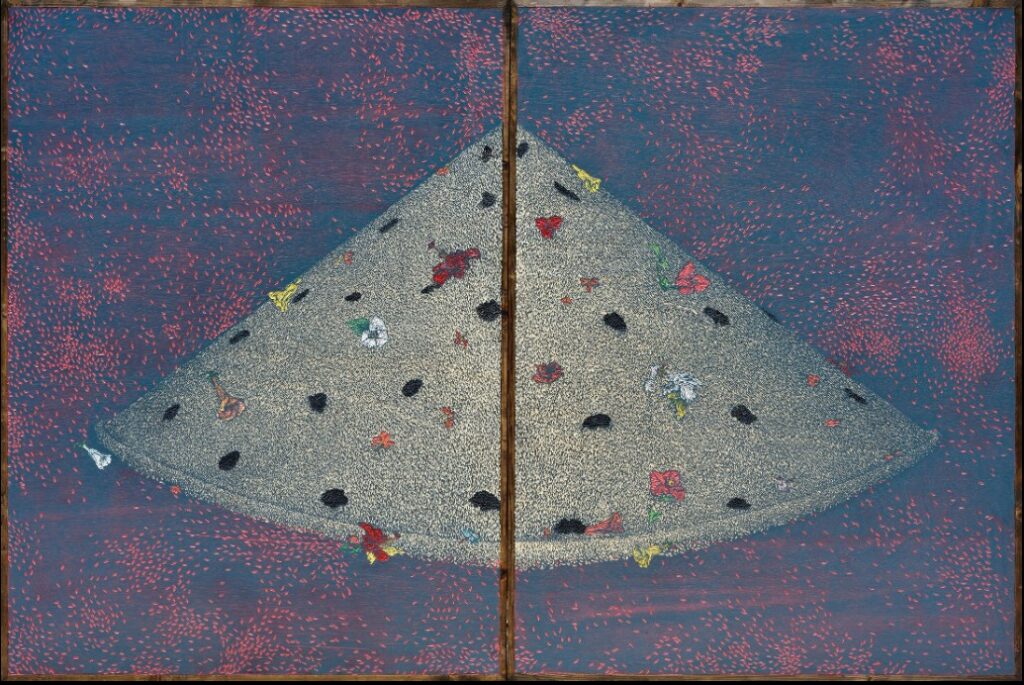
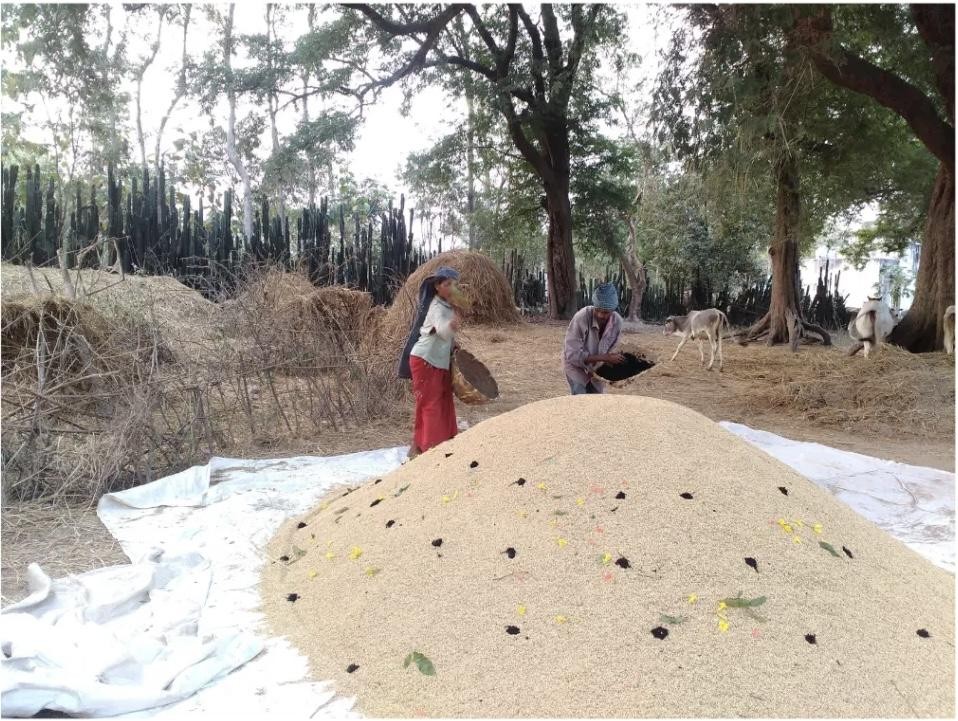
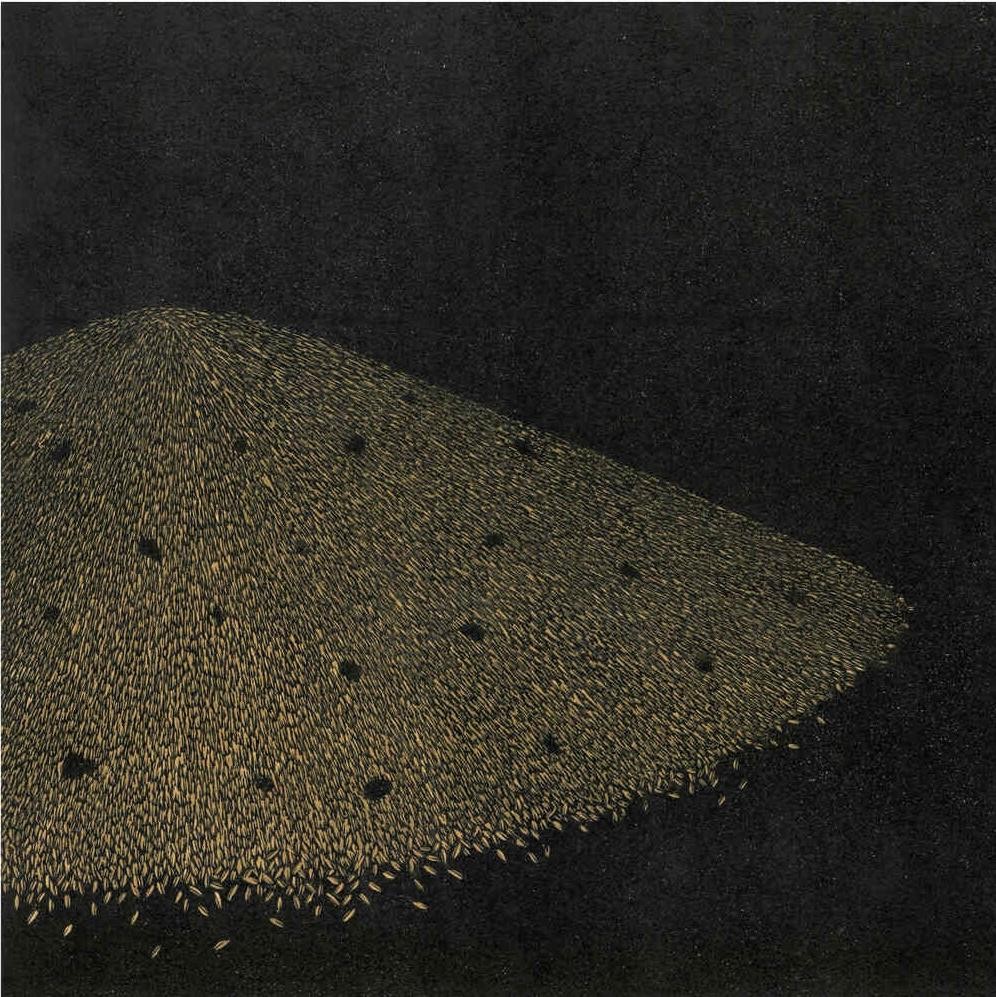
.
Another ritual is during the months of June, July and August (Waralu) when farmers prepare for the new cycle of farming by dispersing the seeds soaked in goat’s blood, this ritual. is a form of protection and signifies the nuanced relationship between the community and food, which is a form of livelihood for them. Satyanarayana has specified that it is usually rice that is used in this ritual and it is connected to the harvest of rice. His works focus on these symbolisms and deeper connotations of food in his home as well as on the sacred nature of food in farming rituals and traditions.
.
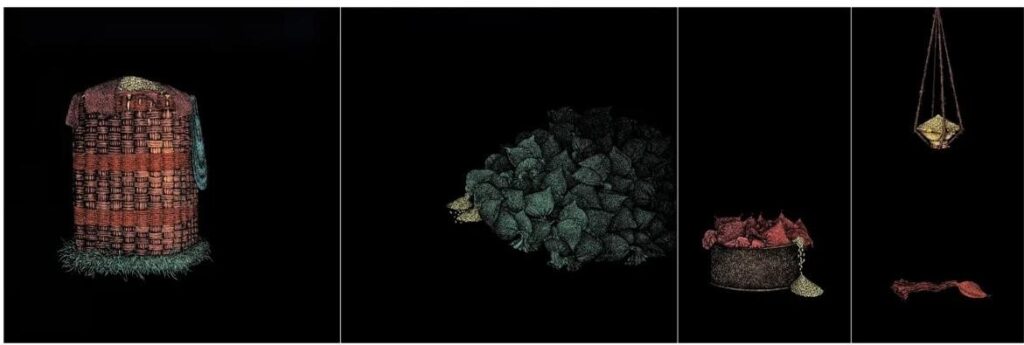
.
To justify these themes through his art, Satyanarayana used the medium of printmaking, specifically woodcut prints, as the medium itself has been associated with various social issues providing a commentary on the current state of the world. In the canon of Indian art history, Nandalal Bose introduced the subject of graphic art as a way to evolve the artistic practice of Indian students when he became the principal of Kala Bhawan in 1920s, he felt that print as a medium helped in moving beyond the realms of realism towards a more introspective form of composition, dabbling with the concept of contextual modernism. This change came as a result of exposure to the woodcut techniques in Japan and China in 1924, and following this we witnessed the works by Haren Das, who has epitomised the regular lives of farmers around him through the intricate woodcuts presenting those moments of bucolic existence through monochromatic palette. Satyanarayana has recognised this affinity between woodcut printmaking and the documentation of life and human condition, and applied it in his practice. He has also discussed the prints by Albrecht Durer, Rembrandt, Franscisco Goya and Anselm Keifer, while Durer’s woodcut prints and engravings showcased Biblical themes in highly ornate forms following the concepts of Gothic art, humanism and classicism while Goya’s etchings and aquatints were more sublime in nature showcasing the darkness that plagues humanity on spiritual and social levels as seen in his print series redefining the principles of Romanticism. Satyanarayana has studied each of these artists and understood their position in visual history while trying to position his thoughts and idiosyncrasies in his imagery.
.
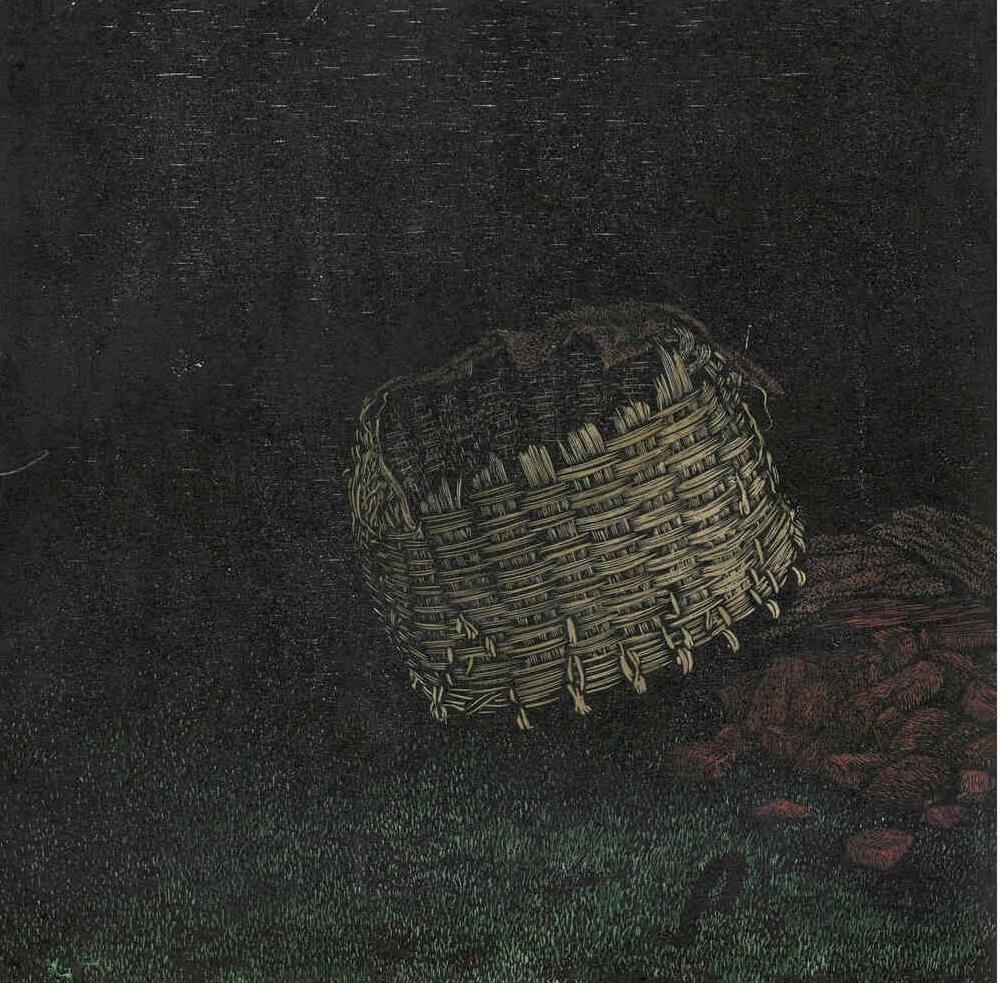
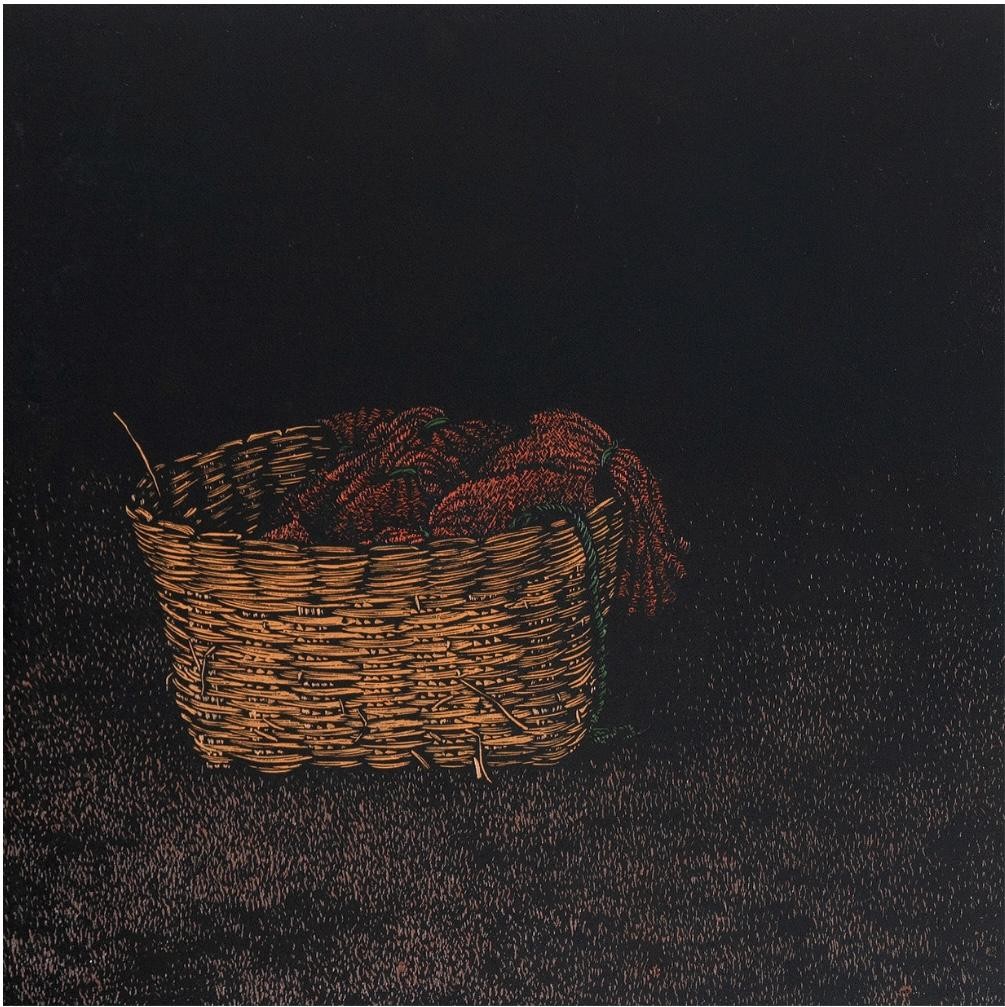
.
One of the recent series, ‘Anecdotes’ is laden with symbolisms as food transforms into a motif, a totemic presence void of any human interference capturing our attention and commanding the narrative. Satyanarayana has focused on certain forms and ideas which is an evolution of his past works, which were solely based in figuration. In his recent series, the colour palette, ideation, and simplification aids in telling a story which is not connected to his personal experience but speaks of more deep-seated societal issues that are ingrained in rural regions. The stories of food and livelihood of farmers which are exploited due to injustice that is rampant in the system, hence each work of art is open to multiple interpretations that are representing political issues of the country. This showcased a development in Satyanarayana’s perception of the world as well as his understanding of artistic mediums which are also tools for social change and not confined to illustrating personal stories, hence reconciling the personal with political. This gets more pronounced in his choice of medium of printmaking which is a tool of mass production and aids in the dissemination of information, and his prints serve a similar purpose; each piece engraved wood carrying remnants of struggles, imprints of generational rituals and traditions whilst telling a story of millions. Satyanarayana’s interpretation of farmlands and its people is a deeply personal and political saga of life that focuses on the material history of food and the palpable hunger to create a space for discourse and introspection on the lesser known aspects of indigenous communities that are the driving force of our economy.
About the artist:
Satyanarayana Gavara (b. 1997) is a contemporary visual artist specialising in woodcuts. His artistic practice revolves around the theme of food, exploring the struggle for attaining sustenance and shedding light on the hidden hunger and deprivation in society. Through his large-scale woodcuts with multiple layers of colours, he depicts food in various combinations, inviting viewers to contemplate the complexities surrounding hunger.
Gavara completed his Bachelor of Fine Arts in Printmaking from Andhra University in 2018 and his Master of Fine Arts in Printmaking from Maharaja Sayajirao University in 2020. His artworks have been featured in national and international exhibitions, such as the Cima Art Award Show (2022), 55th Annual Exhibition of the Birla Academy (2022), Second International Mini Print Triennial in Ukraine (2021), the SYPA exhibition in Bangladesh (2019), and the Tokyo International Mini Print Triennial in Japan (2018) to name a few. Gavara has also participated in various workshops and residencies, including the Space Studio Summer Residence in Vadodara, Gujarat, and the Immerse Residence in Mumbai (2022). The artist currently lives and works in Baroda, Gujarat.
